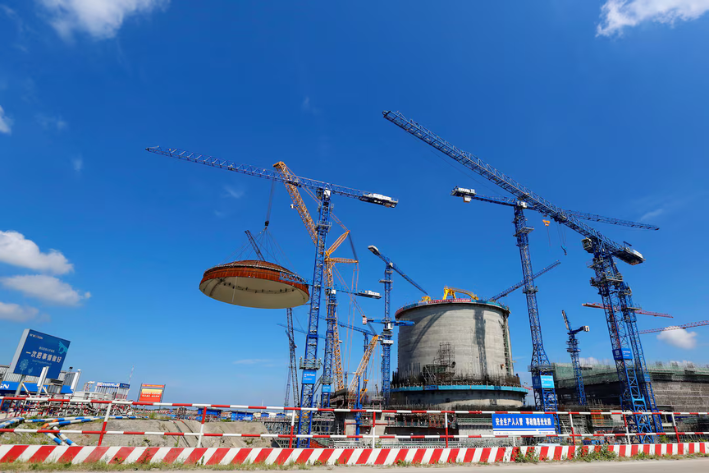- China’s state funding and low-interest loans for nuclear power development puts them 15 years ahead of the US in high-tech nuclear power advancement
- China has 27 nuclear reactors under construction with average timelines of seven years, leading to scale economies and learning-by-doing effects
- High-tech nuclear reactors are seen as safer and more efficient, but critics raise concerns about proliferation and material risks
- The UN’s atomic energy chief emphasizes the importance of nuclear energy in decarbonization efforts, despite challenges and pushback
- China’s nuclear power industry has thrived with sustained state support and local strategies, leading to the development of innovative projects like the world’s first fourth-generation high-temperature gas-cooled reactor
China’s State Funding: A Nuclear Power Game Changer
In the realm of nuclear power development, China is making significant strides that are putting it on a trajectory far ahead of the United States. One key factor driving this advancement is the state funding that China provides for nuclear power projects. This support has enabled China to offer loans for nuclear power development at incredibly low rates, as low as 1.4%, a stark contrast to the financing available in Western economies.
China’s Lead in Nuclear Power Technology
A recent report by the Information Technology & Innovation Foundation highlights that China could be as many as 15 years ahead of the US in high-tech nuclear power development. The report emphasizes China’s rapid deployment of modern nuclear power plants, with 27 reactors currently under construction. What sets China apart is its average construction timeline of about seven years, a pace that outstrips that of many other countries.
The report also underscores the significant scale economies and learning-by-doing effects that China’s nuclear power sector enjoys. This suggests that Chinese enterprises are poised to gain a competitive advantage in incremental innovation within the nuclear power industry. Advocates of high-tech nuclear reactors argue that these advancements bring about safer and more efficient plants. However, critics caution about potential proliferation and material risks associated with some of the new reactor designs.
Related Video

Global Perspective on Nuclear Energy
The international debate on nuclear energy is multifaceted. Rafael Mariano Grossi, director-general of the International Atomic Energy Agency, recently highlighted that achieving global decarbonization by 2050 may be nearly impossible without the integration of nuclear energy. However, incidents such as the Chernobyl disaster and the Fukushima accident have cast a shadow on the industry, leading to misinformation and pushback against nuclear power.
Despite the United States having the largest fleet of nuclear power plants globally, the country is currently facing challenges in new plant construction. The Biden administration recognizes nuclear power as a crucial component in combating climate change, yet recent experiences of cost overruns and delays have hindered progress in the US nuclear industry. In contrast, China’s state-owned banks offer exceptionally low loan rates, fostering a conducive environment for nuclear power development.
Challenges and Opportunities in China’s Nuclear Industry
While China’s nuclear power sector has seen remarkable growth, it is not without its challenges. The China Nuclear Energy Association has raised concerns about a severe glut in nuclear component production, leading to excessive competition and price reductions that are causing losses within the industry. This scenario mirrors the challenges faced in China’s solar energy sector, where state subsidies have created a surplus of solar power, driving down prices and prompting calls for a reevaluation of funding strategies.
China’s strategic state funding initiatives have propelled the country to the forefront of nuclear power development. With a robust pipeline of projects and a commitment to technological innovation, China is poised to continue its dominance in the global nuclear power landscape. As the world grapples with the urgent need for clean energy solutions, China’s advancements in nuclear power serve as a testament to the power of state support in driving progress in critical industries.
Links to additional Resources: